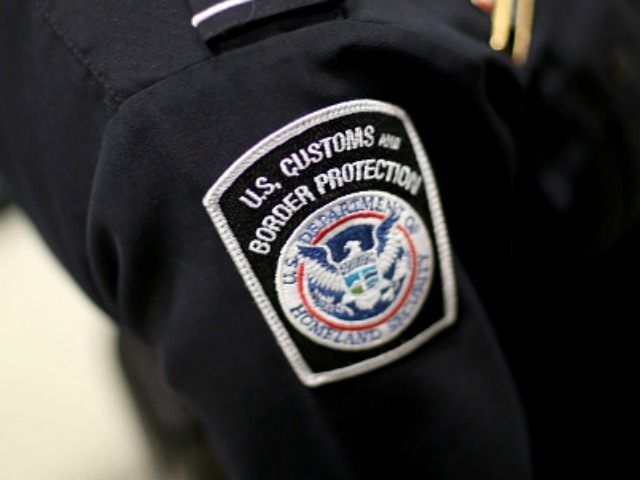Why Trump’s Border Security Didn’t Last, Part 3
Donald Trump implemented an effective border security scheme, but his successor, Joe Biden, was able to quickly dismantle it, and the result has been disaster. To bring security back to the border, it’s important to recognize how Trump achieved that goal, and why his actions were so rapidly undone. To that end, on July 12, I explained the border issues Trump faced when he took office, and on July 13, I examined the unique political challenges he confronted (some of them self-inflicted) in dealing with those issues. Now, I’ll describe how Trump — through fits and starts — used the powers of the presidency to overcome those challenges and address those issues.
An Uneven Trajectory. In FY 2017, when Trump took office, Border Patrol agents at the Southwest border apprehended fewer than 304,000 illegal migrants — a 45-year apprehension low. In FY 2020, his last full year in office, agents there stopped just over 400,000 illicit crossers.
That’s a not insignificant 32 percent increase, but one that belies how uneven the trajectory between the two fiscal years really was.
That’s because it omits the fact that in the two intervening fiscal years, apprehensions had hit a 12-year high in FY 2019 (when there were more than 851,508 Southwest border apprehensions) and ignores the political turmoil that accompanied Trump’s border security efforts.
Much of that turmoil was rank political opportunism on the part of the president’s critics, as I explained in my last piece, but some of it had to do with the idiosyncratic persona of the president himself. Most candidates make big campaign promises and then adjust to the political facts on the ground, or as the late Mario Cuomo put it, “You campaign in poetry; you govern in prose.”
Instead, Trump seemingly followed a different Cuomo aphorism, going “from stone to stone across the morass” to deliver on his promises to stop illegal border immigration.
Strong Headwinds. Trump faced strong headwinds in accomplishing this task.
Section 235(b) of the Immigration and Nationality Act (INA) mandates that all inadmissible “applicants for admission” at the borders and ports (including illegal entrants) be detained, from the moment that they are encountered by CBP until they are either granted some form of immigration “relief” (usually asylum) or removed.
Nevertheless, the Obama administration decided in 2009 to ignore that congressional mandate and instead release illegal entrants who had passed the low “credible fear” bar that allows them to apply for asylum. As a direct consequence, the number of “other than Mexican” (OTM) nationals entering illegally has soared, from 8 percent of aliens apprehended by Border Patrol in FY 2009 to 80 percent in FY 2019.
Even when they are detained, those OTM migrants are much more difficult for DHS to remove than Mexican migrants are.
CBP can simply grant Mexican nationals “voluntary return”, take them to the nearest port of entry, and send them back. Mexico has long been loath to accept the return of OTMs, however, which means the only way to deport them is repatriation to their home countries with a (often difficult to obtain) travel document.
As if that weren’t bad enough, a 2015 district court order in Flores v. Lynch directed DHS to release alien children who entered illegally with adults in “family units” (FMUs) within 20 days of encounter. That order has provided smugglers an irresistible sales pitch to offer any adult abroad even thinking about entering the United States illegally: “Bring a kid with you, and you will be released.”
Plenty took up the offer. In FY 2015, the year the Flores order was issued, agents apprehended fewer than 40,000 illegal migrants who had entered illegally in family units — about 12 percent of total Southwest border apprehensions that year (331,333). By FY 2019, FMUs represented more than 55 percent of the 851,500-plus migrants apprehended at that border.
Not only did that court order require that those family migrants be released, but it also discouraged DHS from investing in family detention beds, and when agents encountered nearly 474,000 FMU aliens at the Southwest border that fiscal year, it only had 2,500 beds to keep them in.
The Republican-Controlled 115th Congress. One advantage Trump did have was that his fellow GOP partisans controlled both the House and the Senate in the 115th Congress, which convened shortly before he was sworn in in January 2017.
Not that either the president or the legislative branch took much advantage of the situation, however, as no major immigration reforms emerged from that Congress.
The Securing America’s Future Act (SAFA), offered by then-House Judiciary Chairman Bob Goodlatte (R-Va.) would have provided legal status to beneficiaries of the Obama-era Deferred Action for Childhood Arrivals (DACA) program in exchange for (among other things) mandatory E-Verify, asylum reforms, curbs on chain migration, border infrastructure funding, restrictions on “sanctuary cities”, and an end to the diversity visa lottery.
As my colleague Mark Krikorian predicted in June 2018, however: “Unfortunately, the Goodlatte bill is unlikely to pass, since every Democrat will vote against it, joined by the immigration-expansionist Republicans.” Which is what happened as both it and a watered-down rival “compromise” bill offered by leadership as an alternative failed in the House.
Note that each of the bills came to the floor in the wake of the “zero tolerance” fiasco I described in my last piece, with the vote on SAFA (it was defeated, 231 to 193, with no Democrats voting for the bill) occurring on June 21, the day after Trump ended the policy by executive order, and the vote on the compromise bill (which went down, 301 to 121, again with no Democrats voting “aye”) being held a week after that order was issued, on June 27.
Democratic House Control in the 116th Congress. Any hope Trump would find legislative support for his border reforms was dashed when Democrats took control of the House after the 2018 midterm elections, handing Rep. Nancy Pelosi (D-Calif.) the speaker’s gavel in the 116th Congress.
Pelosi was Trump’s biggest antagonist on the Hill, particularly when it came to immigration. When the president proposed placing greater emphasis on merit-based immigration in 2019, for example, the speaker slammed the plan as “condescending” (she also deemed Slovenian-born First Lady Melania Trump fair game for attack in opposing the proposal).
And the speaker led the opposition to Trump’s 2019 demands for $5 billion in “border wall” funding and his request in the spring of that year for $4.5 billion in supplemental border funding to deal with a massive influx of unaccompanied alien children (UACs) and adult migrants entering illegally with children in family units (FMUs), each of which I described in detail in my last piece.
Administrative Actions. Finding no support for his immigration policies in Congress but facing a swelling rise in illegal migrants at the Southwest border — and a massive increase in UACs and migrant families in particular in FY 2019 — Trump had to turn to administrative actions to restore security there.
Asylum Reforms. Asylum is the most significant exception to the limitations Congress has placed in the Immigration and Nationality Act (INA) on immigration to the United States.
And it is likely the most abused exception. As the Supreme Court has held, “Many ask for asylum, claiming that they would be persecuted if returned to their home countries. … Most asylum claims, however, ultimately fail, and some are fraudulent.” In fact, evidence presented at a 2014 congressional hearing revealed that USCIS had determined “only 30 percent of asylum cases from a random sample were confirmed to be fraud-free”.
Under the asylum statute (section 208 of the INA), “Any alien who is physically present in the United States or who arrives in the United States (whether or not at a designated port of arrival … ), irrespective of such alien’s status, may apply for asylum.” As I explained above and in my July 12 piece, it is also the key impediment to DHS’s ability to remove migrants caught crossing illegally.
When it comes to immigration, administrations can implement legal changes either through procedural rulemaking (by publishing new regulations) or binding precedential decisions issued by the attorney general (whose determinations, under the INA, control “all questions of law”). With respect to asylum, Trump used both.
Of course, regardless of which path an administration takes, either is subject to judicial review. If either a precedent decision or a regulation are blocked by the district court (through injunction, vacation, restraining order, or in the case of precedent, reversal), it can take years — absent a stay — for a final ruling to be issued by either a circuit court or the Supreme Court, during which the policy languishes.
In his June 2018 decision in Matter of A-B-, then-Attorney General Sessions provided bright-line rules for adjudicators (including immigration judges and asylum officers) considering asylum claims by aliens who asserted that they feared “persecution” from non-state criminal actors — usually gangs or spousal abusers. Those are likely the most common border claims.
That December, Judge Emmet Sullivan of the U.S. District Court for the District of Columbia permanently enjoined that decision as it related to credible fear claims. By statute, expedited removal procedures are within the sole jurisdiction of that court, but notably, Sessions’ decision did not involve a border alien. The judge concluded, however, that his limited INA authority gave him sufficient license. The D.C. Circuit concurred, largely affirming that order in a July 2020 opinion.
In July 2019, the Trump administration published a “safe-third country” rule that would have required illegal entrants and other aliens without proper documents at the Southwest border to apply for asylum in a third country through which those aliens passed before seeking that protection in the United States.
Given that every country in the Western Hemisphere — save Cuba (an island) and Guyana (an isolated coastal enclave) — grants some form of asylum protection, in theory at least foreign nationals should not be allowed to traverse any or all of them to pick the United States as the place to seek protection.
Nonetheless, a U.S. district court judge (in Oakland, Calif., for those complaining that plaintiffs “forum shop” to block Biden’s border policies) quickly enjoined that rule. It wasn’t a surprise, because a few months earlier he had blocked a different Trump rule that rendered illegal entrants ineligible for asylum. The Ninth Circuit affirmed that injunction in July 2020.
In an expression of hope over experience, in December 2020 — the month after Trump lost reelection — the administration published a regulation that would have (among other things) raised the burden of proof for credible fear. It was enjoined less than a month later by a different district court judge, this one across the bay in San Francisco.
Policy Initiatives. Of course, procedural rulemaking and Attorney General precedent are not the only tools in the president’s shed. The administration can also implement changes through simple administrative policy initiatives. DACA, for example, which currently benefits nearly 600,000 removable aliens in the United States, was created by DHS memo.
Such policy initiatives were the main tools that the Trump administration used to bring the border under control.
“Remain in Mexico”. The most notable Trump border policy program — and arguably the most effective — was the Migrant Protection Protocols (MPP), better known as “Remain in Mexico”.
MPP was implemented by then-DHS Secretary Kirstjen Nielsen in January 2019, and it allowed DHS to return “other than Mexican” (OTM) migrants at the border caught entering illegally or without proper documentation back to Mexico to await removal hearings. It was based on DHS’s authority in section 235(b)(2)(C) of the INA to return inadmissible applicants for admission who had crossed a land border back pending proceedings.
Aliens subject to MPP were paroled into the United States long enough to apply for asylum at port courts, while the Mexican government agreed to provide them with protection for the duration of their stays in that country.
Immigrant advocates moved to block the program in February 2019 (again, in federal court in northern California), and a district court judge there enjoined MPP in early April of that year. Shortly thereafter, that injunction was stayed by a three-judge panel of the Ninth Circuit pending appeal.
Thereafter, the program got up and running, expanding from a pilot site in San Ysidro, Calif., to Calexico, Calif., and El Paso, Texas, and then in July 2019 to Laredo and Brownsville (both in Texas) before finally it was expanded to the Arizona border town of Nogales in the late fall. When it was fully implemented, nearly 70,000 migrants were sent back across the border to await their removal hearings under MPP.
It should be noted that the Ninth Circuit later affirmed the district court injunction of Remain in Mexico in late February 2020, but that injunction was stayed by the Supreme Court in March of that year.
In any event, in its October 2019 assessment of the program, DHS determined that MPP was “an indispensable tool in addressing the ongoing crisis at the southern border and restoring integrity to the immigration system”, particularly as related to alien families. Asylum cases were expedited under the program, and MPP removed incentives for aliens to make weak or bogus claims when apprehended.
That’s because many if not most of those aliens requesting asylum at the border aren’t really seeking protection so much as they are coming to live and work here for the time (usually years) that it takes for their claims to be heard. Remain in Mexico denied them the ability to do so.
Returning those migrants to Mexico also enabled the administration to comply with Congress’ directive that DHS not release inadmissible aliens stopped at the border and ports into the United States until they receive asylum or are removed.
Even absent DHS’s assessment of the program, the impact of Remain in Mexico is clear from CBP’s own stats. In May 2019, before MPP was fully implemented, agents at the Southwest border apprehended nearly 133,000 illegal entrants, 63.6 percent of whom (nearly 84,500) were in family units.
Four months later, in September, apprehensions dropped to fewer than 41,000, fewer than 40 percent (15,824) in FMUs. That’s a four-month overall decline of just less than 70 percent, and an 81 percent decline in family apprehensions over that period.
The numbers kept falling, to fewer than 30,000 in January 2020 (fewer than 5,200 in family units, 17.6 percent of the total), before rising slightly to just over 30,000 the next month (15.3 percent in FMUs).
Diplomatic Efforts. No single other factor — including seasonal fluctuations — did more to improve border security and limit illegal entries than MPP. That said, it was not the only executive authority that the Trump administration brought to bear at the Southwest border.
Using his foreign policy power, Trump negotiated safe third country “Asylum Cooperative Agreements” (ACAs or “safe-third country agreements”) with El Salvador, Guatemala, and Honduras.
Pursuant to those agreements, the three countries agreed to share the migrant burden with our regional partners by allowing DHS to send third-national asylum seekers to those countries to apply for protection.
While the ACAs with El Salvador and Honduras weren’t implemented before the Covid-19 pandemic was announced in March 2020 (they came into force in December of that year), the United States was able to send more than 900 third-country nationals to Guatemala, most of them from El Salvador and Honduras.
That not only demonstrated that so-called “asylum seekers” could apply for protection closer to home, but it also signaled to would-be migrants that simply making it illegally to the United States was not a guarantee they would be able to remain.
As important, if not more so, was the diplomatic pressure that Trump brought to bear to convince the Mexican government to secure its own southern border to transit by illegal OTM migrants.
As AP explained in December 2019, Trump “threatened crippling tariffs on all Mexican goods unless Mexico stepped up efforts to curb the flow of migrants. Mexico responded by deploying thousands of members of its newly formed National Guard along migration routes.” Illegal migrants can’t cross the Southwest border if they can’t get there.
PACR and HARP. To speed the review of credible fear claims by illegal entrants, Trump implemented two separate border programs: Prompt Asylum Case Review (PACR), for aliens from Central America; and Humanitarian Asylum Review Program (HARP), for Mexican nationals. Under PACR and HARP, credible fear claims were conducted while illegal entrants were in CBP custody.
GAO explains that PACR was launched as a pilot program in El Paso in October 2019, with Border Patrol leadership expanding it to the component’s Rio Grande Valley (Texas) sector in December 2019 and Yuma (Ariz.) sector in January 2020. Those sectors were chosen because they had temporary structures at which aliens subject to that process could be housed.
HARP, on the other hand, started out under the auspices of CBP’s Office of Field Operations (“OFO”, which has responsibility for enforcement at the border ports) in October 2019, before being expanded to Border Patrol in January 2020. At that point, inadmissible aliens encountered by OFO were sent to Border Patrol for HARP processing.
All told, according to GAO, nearly 5,300 aliens encountered by CBP at the Southwest border were subject to PACR and HARP through September 2020. Of that total, 1,210 received positive credible fear determinations and were sent to immigration court, while more than 3,700 were removed.
While those numbers are relatively small, by ensuring that inadmissible applicants for removal would have their credible fear claims decided quickly while they were in custody, PACR and HARP preserved ICE detention resources while still allowing Congress’ expedited removal processes to be employed. And because many of those aliens were removed before ICE had to release them, it lessened the likelihood that inadmissible aliens without asylum claims could exploit the system.
Title 42. Many of the descriptions above end in the early months of 2020, for an obvious reason: After the Covid-19 pandemic was declared in March 2020, most international travel, legal and otherwise, stopped, as did most “non-essential” travel over the land borders of the United States.
In response to the pandemic, CDC issued the first of several orders directing the expulsion of illegal entrants and aliens without valid travel documents at U.S. borders that month, pursuant to its powers under Title 42 of the U.S. Code.
Those health-related pronouncements were not premised on border security, per se, but they did provide CBP with another tool that it could use to that end. Contra those who contend after the fact that the administration implemented those Title 42 orders simply to prevent illegal entries, however, the foregoing shows they weren’t that necessary, as Trump already had effective security policies in place.
And then Came Biden… I began the first of these three posts by quoting a September 2021 letter in which Biden’s first Border Patrol chief, Rodney Scott, told Senate leadership that he was “sickened by the avoidable and rapid disintegration of what was arguably the most effective border security in” U.S. history in the prior few months.
Chief Scott put the blame for the decline in border security on “inexperienced political employees” who “ignored and stymied” what he referred to as “[c]ommon sense border security recommendations from experienced career professionals”; he was there and would know.
They were plainly taking direction from the top, however, as Biden quickly ditched all the Trump policy initiatives that had created that security in the first place: PACR and HARP were ended by executive order on February 2, 2021; Secretary of State Tony Blinken announced — “In line with the President’s vision” — the administration was suspending and terminating the ACAs four days later, and DHS suspended new enrollments in MPP directly after the inauguration.
Remain in Mexico, however, offers a glimpse into what could have been, had Trump been able to fully implement his regulatory changes.
Its suspension prompted the states of Texas and Missouri to sue to keep the program going, alleging that act “constitutes final agency action reviewable under the” Administrative Procedure Act (APA), which governs executive branch rulemaking, and that Biden acted “arbitrarily and capriciously” in doing so. More than two years later, the administration is still fighting the states over the issue.
Once a regulation is in place, a subsequent administration can’t just wipe it away. Under APA caselaw, when the executive branch changes an agency policy, it must explain its reasons for doing so. That’s as true for asylum and border regulations as it is for any other and was one of the reasons why the courts above ruled as they did in enjoining the Trump administration.
Of course, statutory changes are even better. It’s not clear how Trump would have been able to finagle meaningful changes out of the Republican-led 115th Congress and it would have been even harder to get anything done with Speaker Pelosi in the 116th Congress, but this is a man who wrote a book called The Art of the Deal. Compared to New York union bosses, congressmen are pushovers.
Why didn’t Trump’s border security last? Unfortunately, and because of challenges — some self-inflicted — it wasn’t built to last unless it was passed onto a president with the same concerns about, and understanding of, border security. Joe Biden’s proven he’s not that president.






